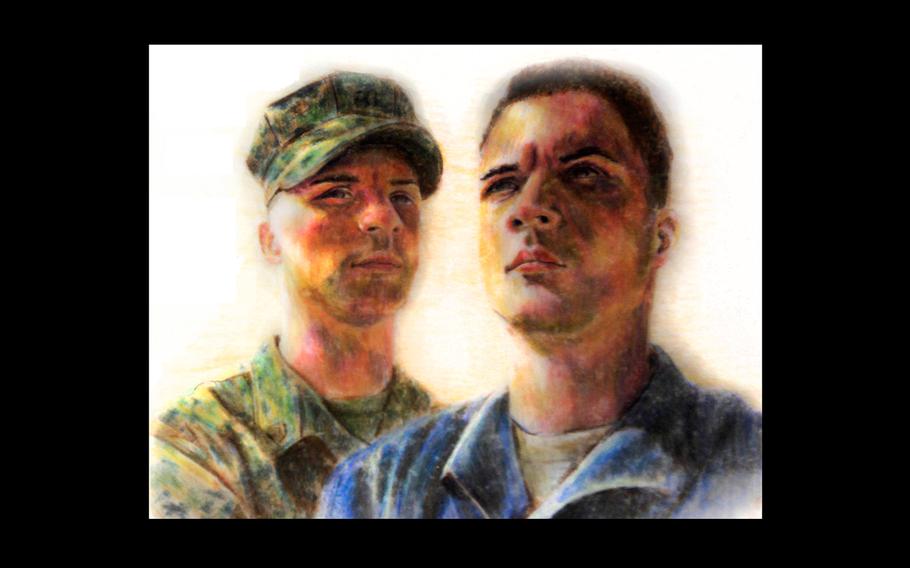
A Marine Corps photo illustration depicts a 2010 advertisement for the Camp Pendleton Transition Assistance Management Program. (Michelle Brinn/U.S. Marine Corps)
In October 2001, less than a month after the 9/11 attacks, the first American troops began combat operations in Afghanistan. Nearly two years later, the war in Iraq began. Over the next two decades, about two million American service members answered the call to serve in these conflicts. The wars may be over, but America’s duty to the veterans who returned is not. Transitioning from military to civilian life can often be a difficult challenge. This reality is especially true regarding their return to the civilian workforce, beginning a new career or resuming a former one, and building financial security. The good news is that there are real concrete actions that we as a society can take to ensure our nation’s veterans and their families are successful in this transition.
The generation of veterans returning from Iraq and Afghanistan looks quite different than previous generations of troops returning home. The post-9/11 wars were the first extended conflict to depend on an all-volunteer force, meaning many soldiers, sailors, airmen and Marines deployed multiple times. The long duration of the conflict also meant that troops born after the war began later fought in it as young adults. Because military service is often a family tradition, some families even saw multiple generations — parents and their children — serving in the same conflict.
The economy is also different from what earlier veterans experienced. Today’s modern economy demands new and constantly evolving skill sets, often on highly technical issues. However, employers do not always understand how professional skills developed in the military can translate to the private sector. Often civilian hiring managers do not understand the unfamiliar terms and jargon used in the military. The irony is that many skills common in the military, such as engineering, IT and logistics, are in high demand by private sector employers.
These effects are compounded for veterans with disabilities who face unique circumstances returning to the civilian workforce. The current generation of veterans has the highest level of reported disabilities compared to previous generations. According to the U.S. Census Bureau, 39% of post-9/11 veterans have a service-connected disability, compared to 26% of Vietnam veterans and 14% of World War II veterans. The compounded effects are true for disabilities that are both apparent and not apparent; in fact, a recent survey of veterans found that mental health was often cited as a top barrier to employment.
Many employers want to do more. They understand that America’s veterans possess expertise, talent, and leadership qualities that can enhance an organization. Well-intentioned programs to hire veterans have resulted in relatively lower unemployment rates compared to the population at large. However, this statistic overlooks the fact that many veterans are dealing with underemployment, are in jobs that are not in career paths they trained for, are making less money than they did while serving in uniform, or feel they lack opportunities for growth and development.
These experiences have left many veterans, particularly disabled veterans, feeling uncertain about their long-term financial security and prospects for retirement. Additionally, many veterans cite dissatisfaction in their professional lives. A job isn’t just about financial stability; as crucial as it is, having a fulfilling career that makes you happy improves your overall life satisfaction. Many veterans want their post military employment to match the satisfaction and fulfillment they enjoyed on active duty but find it difficult to identify and secure jobs that adequately utilize their skills and experience, are appropriately challenging and provide opportunties for growth. This can be disillusioning for veterans and their families.
The good news is that there are steps that employers who want to do more can take to help ensure assimilation into the civilian workforce is smoother for veterans and military families. Even better, these steps should help all employees.
Employers should consider the needs of veterans, especially disabled veterans, when designing their benefits packages. Benefits as simple as a tool to help coordinate employee benefits and VA benefits could go a long way in navigating complex, sometimes overlapping programs. Other benefits, such as emergency savings plans, retirement plans, or health savings accounts, can help with unforeseen expenses and better position employees for retirement. Specifically, providing education about mental health care and coverage and ensuring the information is easy to access can help employees take advantage of benefits they may not be aware of.
Employers also should be proactive in creating a culture that is safe and inclusive for disabled veterans to disclose their situations and their needs. Concerns about stigma and bias are a common impediment that keeps many employees from using existing programs and benefits that they have earned. Fostering a supportive environment may include creating opportunities for confidential conversations about employer benefits, potentially through a trusted partner organization that can provide support or training for managers and employees to reduce bias and stigma around disabilities — especially mental health.
Finally, employers can work with nonprofit organizations as trusted partners. Easterseals has been supporting veterans since World War II, adapting for the needs of each new generation. Such support includes helping veterans navigate byzantine government benefits systems and running programs that offer skills training, job search assistance, employment preparation, and guidance.
While these steps may not be a comprehensive solution to complicated generational issues, they are tangible actions that employers can take today. They are a small cost but could have a tremendous benefit in helping to serve those who have served us.
Kendra Davenport is president and CEO of Easterseals, one of the largest and oldest disability service providers in the country.